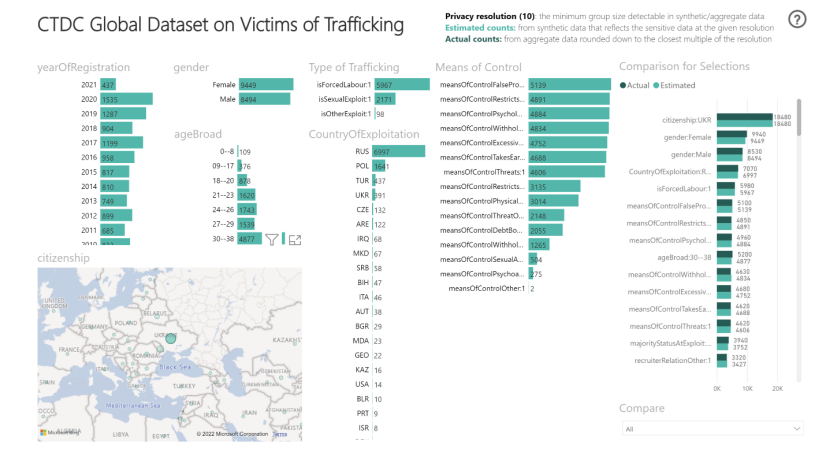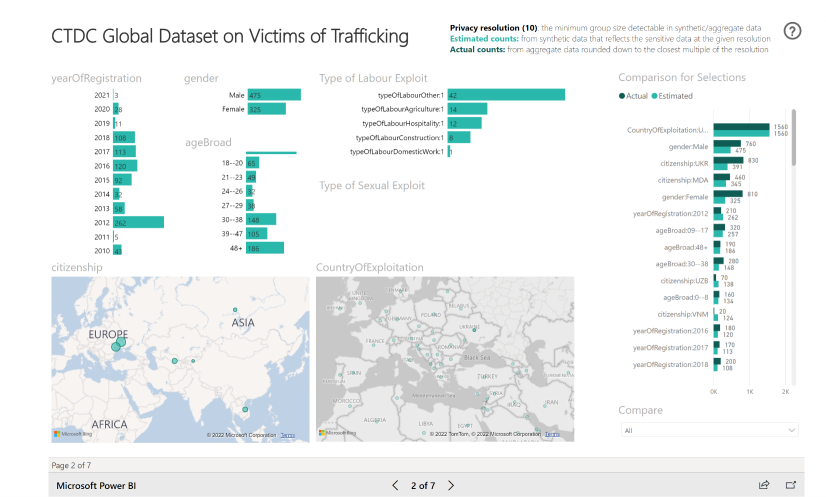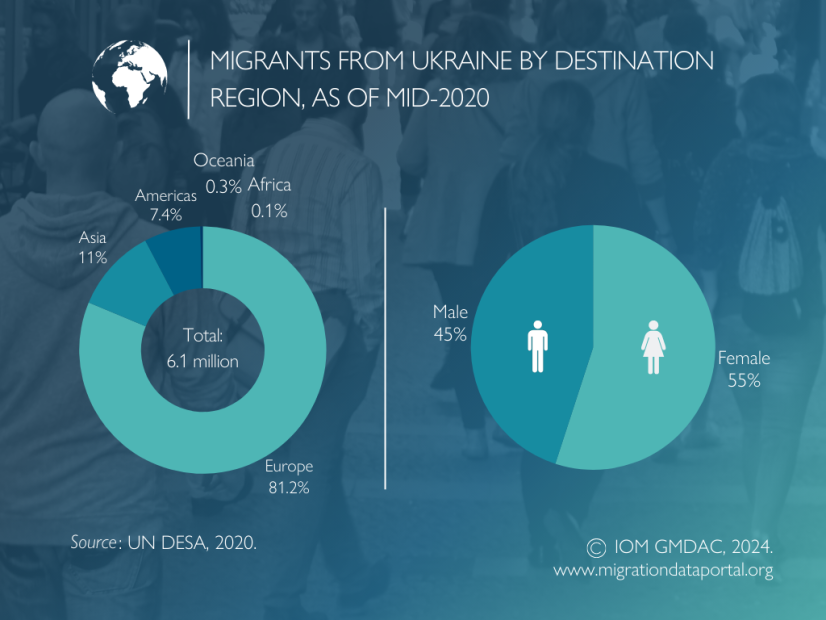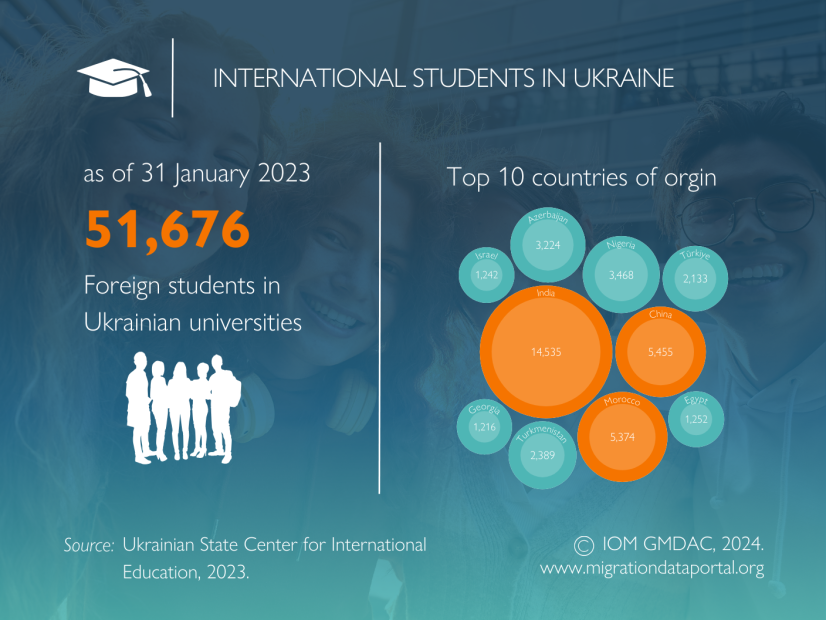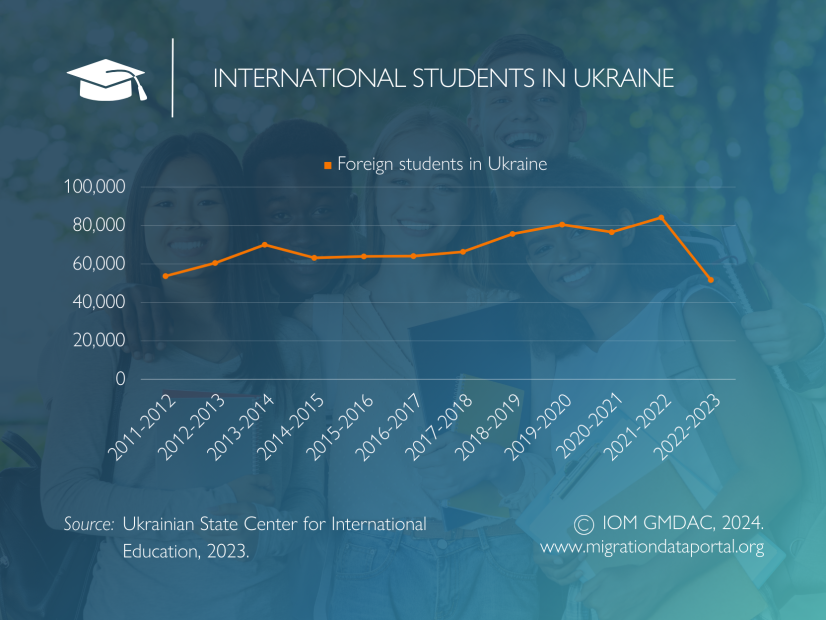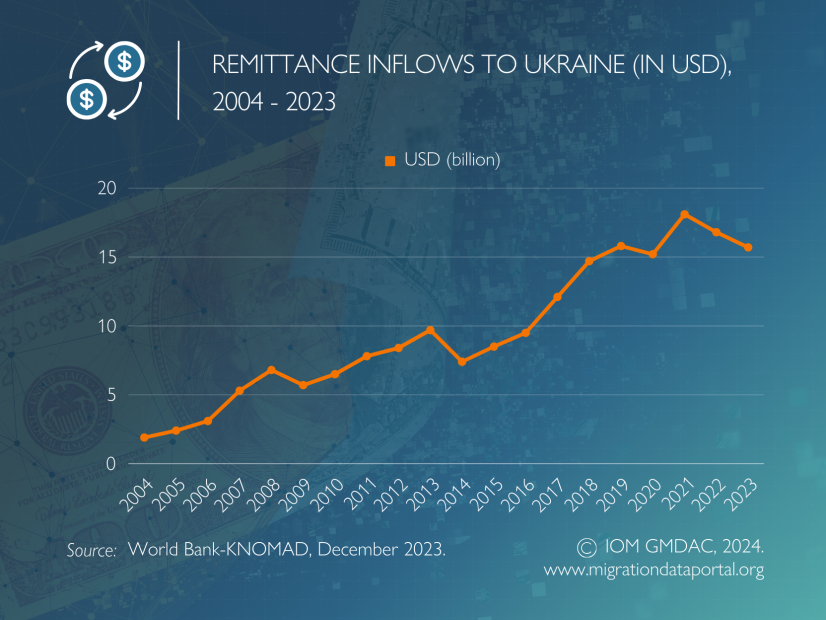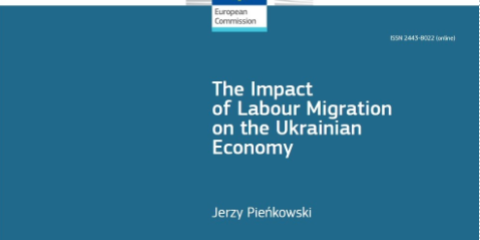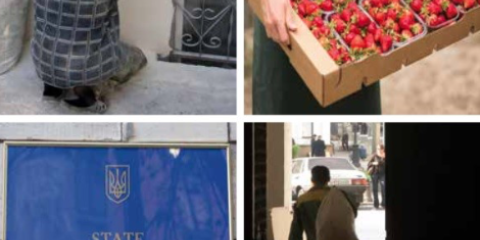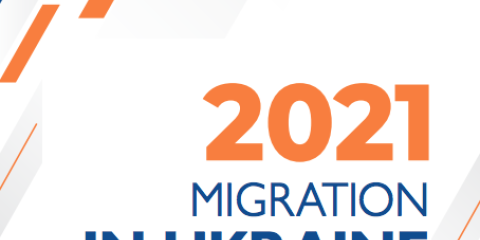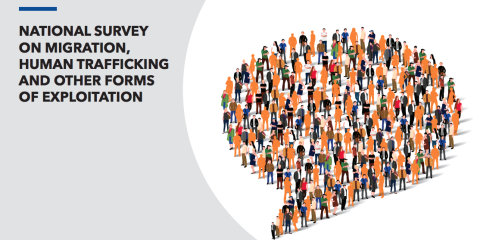
This section provides an overview of key migration data until 2023, including migrant stocks, number of international students, labour migration and remittances.
Last updated on 20 February 2024

Understanding migration trends helps to anticipate migration choices and to better tailor policy responses in countries of transit and destination as well as in the countries of origin of returning migrants and students.
See "CRISIS MOVEMENTS" for an overview of current population movements inside and outside Ukraine, including IDPs and refugees.
Human Trafficking
By Ukrainian Citizenship
Between 2002 and 2021, there were 18,480 identified victims of trafficking with Ukrainian citizenship in the CTDC database (CTDC, 2022). It should be noted that a high number of identified victims in a particular country does not necessarily indicate a higher prevalence of human trafficking in that country, instead it may indicate an effective counter-trafficking response.
The identified victims were mainly exploited in the Russian Federation (38%) and Poland (8%). 54% of the victims of trafficking with Ukrainian citizenship were female. Most victims were in the age group 30-38 years (28%), followed by 39-47 years (16%). Over two thirds of the victims with Ukrainian citizenship were exploited in forced labour; while 30 per cent were sexually exploited (CTDC, 2022b).
Since these data reflect the number of victims identified by the contributing organizations, these figures may not represent all victims identified within a country or globally.
Source: CTDC, 2022. Screenshot taken on 26 April 2022. The interactive dashboard, displaying statistics for victims with Ukrainian citizenship is available at: https://www.ctdatacollaborative.org/global-synthetic-data-dashboard
By Country of Exploitation
According to data collected by Counter Trafficking Data Collaborative (CTDC) partners between 2002 and 2021, the most frequent citizenship among victims of trafficking exploited in the Russian Federation and in Poland was Ukrainian. Of the 11,210 trafficking victims identified in Russia, 63% were Ukrainian citizens. Of the 2,460 trafficking victims identified in Poland, 86% were Ukrainian citizens (CTDC, 2022b).
The high numbers of Ukrainian victims of trafficking in Russia and Poland suggest that these neighbouring countries represent an intraregional trafficking corridor. With more than 7.4 million refugees from Ukraine recorded across Europe between 24 February and 22 September 2022 (UNHCR, 2022) and more likely to flee, there is high potential for Ukrainians to fall victim to human traffickers (IOM, 2022).
Source: CTDC, 2022. Screenshot taken on 26 April 2022. The interactive dashboard, displaying statistics for victims with Ukrainian citizenship is available at: https://www.ctdatacollaborative.org/global-synthetic-data-dashboard
Migration to and from Ukraine
As of mid-year 2020, 6.1 million migrants from Ukraine resided abroad. While more than 53 per cent of them resided in the Russian Federation, other top destinations included the United States of America (6%), Kazakhstan (5.8%), Germany (4.7%), Poland (4.4%), Italy (4%), Belarus (3.6%), Czechia (2.1%), Israel (2.1%) and Uzbekistan (2%). [1]
An estimated 5 million migrants lived in Ukraine as of mid-year 2020. Of these, 75.9 per cent and 15.5 per cent were from European and Asian countries respectively.[2]
[1] UN DESA, 2020. Data extracted on 28 Feb 2022.
[2] Ibid.
Mobility from Ukraine to the OECD
In 2021, nearly 200,000 Ukrainians migrated to OECD countries, making them the fourth largest group of new migrants. Additionally, approximately 4.7 million displaced Ukrainians were hosted in OECD countries as of June 2023, with Germany, Poland, and the United States being the largest hosts in absolute numbers. Estonia, the Czech Republic, and Lithuania received the highest numbers of refugees relative to their populations. Women comprised around 70 per cent of adult refugees .
Source: OECD, 2023.
Ukrainian Citizens in the European Union (EU)
Based on available data, 1.4 million Ukrainian citizens were authorized to stay in the EU with a valid residence permit as of the end of 2022. Ukrainians represented the third biggest group of non-EU citizens in the EU after Morocco (2 million) and Türkiye (1.9 million). As of 31 December 2022, the three main EU countries where Ukrainian citizens with a valid permit resided were Poland (450 thousand), Italy (254 thousand) and Czechia (199 thousand). Source: Eurostat, 2024.
International Students
According to the Ukrainian State Center for International Education (of the Ministry of Education and Science of Ukraine), Ukraine hosted 51,676 international students as of 31 January 2023. More than 28 per cent of international students in Ukraine were from India and approximately 11 and 10 per cent from China and Morocco respectively. Source: Ukrainian State Center for International Education, 2023.
Due to the war in Ukraine, the number of international students in the country decreased by 39 per cent between 2022 and 2023.
Remittances
Remittance flows to Ukraine decreased in the past two years from 18.1 billion USD in 2021 to 16.8 billion USD in 2022 and 15.7 billion USD in 2023, following the onset of war and restrictions on outward and inward transfers in the light of martial law (World Bank - KNOMAD, 2023). This drop may be attributed to lower-than-expected remittances from the European Union, notably from Poland, which serves as the largest source of remittances to Ukraine, and transfers are also likely to be carried by hand by people crossing back and forth through Ukraine’s border (Ratha et al., 2023). Remittances received in Ukraine as a share of the national GDP decreased from 13.9 per cent in 2022 to 9.1 per cent in 2023 (World Bank - KNOMAD, 2023).
Labour Martket Intergation of Ukrainian Refugees in the OECD
First evidence from the OECD shows that the labour market integration of Ukrainian refugees has been faster compared to other refugee groups This may be due to the Temporary Protection Directive in European Union and similar schemes in other countries which allows refugees to immediately access the labour market, coupled with higher levels of formal qualifications and existing diaspora networks. In a few European OECD countries, the share of the working-age Ukrainian refugee population in employment is already over 40 per cent (including Poland, the United Kingdom, Lithuania, the Czech Republic, Denmark, the Netherlands and Estonia), while the share may be lower in other countries. Source: OECD, 2023.
Labour Migration in Ukraine
Data collected by the State Statistics Service of Ukraine in 2012 in collaboration with ILO on the extent of short-term labour migration in Ukraine showed that short-term migrant workers made up 82.7 per cent of all migrant workers, or 2.9 per cent of the population aged 15–70. Women were under-represented among short-term and over-represented among long-term migrant workers, accounting for 29.7 per cent of short-term and 56.6 per cent of long-term migrant workers. Source: ILO, 2017.
Labour migration from Ukraine
The start of the war in 2014 changed labour migration patterns. While in 2012, Russia was by far the most popular destination for labour migrants from Ukraine (43% of all Ukrainians working abroad), the most popular destination for Ukrainian migrant workers in 2017 was Poland (39%). 57% of labour emigrants stay less than three months abroad though. Source: European Union, 2020.
Sectors of employment
In 2017, only 27% of Ukrainian labour migrants worked in jobs that were in accordance with their qualifications: 30% worked in a different field; and 36% worked in a field not requiring any qualifications. Only 9% worked in professional and technical services; 14% in trade and services; 26% as workers with tools; and 42% in very simple jobs. Source: European Union, 2020.
